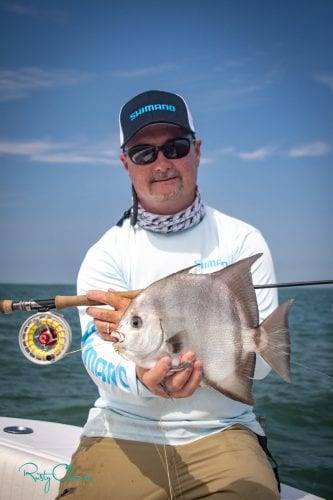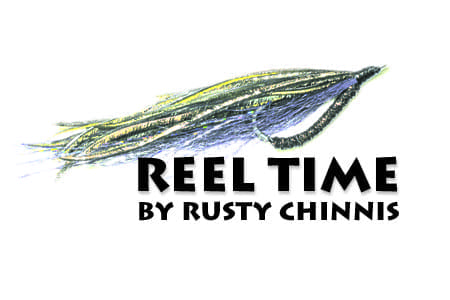Charleston, South Carolina, is a city that’s been on my list to visit for a very long time. The first week in August my wife Chris and I spent four days there exploring the Old City on bikes. While we were there we also sampled some of Charleston’s top restaurants and were introduced to the rich fishing opportunities on a coast resplendent in vast oyster-studded estuaries.
Charleston was founded in 1670 as Charles Town, honoring King Charles II of England. Charleston adopted its present spelling with its incorporation as a city in 1783 at the close of the Revolutionary War.
The city has a past steeped in history, including the birthplace of the Civil War and the infamous honor of being the city where nearly half of all Africans were brought to America as slaves. Today, Charleston is known for its well-preserved architecture, distinguished restaurants and hospitable people.
Charleston is a popular tourist destination, having received numerous accolades, including America’s Most Friendly City by Travel & Leisure in 2011 and in 2013 and 2014 by Conde Nast Traveler, and also the most polite and hospitable city in America by Southern Living magazine. In 2016, Charleston was ranked the World’s Best City by Travel & Leisure.
We stayed at the King Charles Inn in Charleston’s center city, a well-preserved historic district on a peninsular separated by the Ashley River to the west and the Cooper River to the east. Referred to locally as The Peninsula, the location allowed us easy access to the historic city center with its storied architecture and world-famous culinary destinations.
One of the highlights of the trip was an opportunity to explore the Low Country fishing with local guides Captain Mark Phelps and Captain Rob Glasser. I was introduced to Glasser by my friend and tackle representative Rick Hess. As it turned out Glasser was best friends with another acquaintance Captain Mark Phelps, whom I had originally met when he started his guide business in Sarasota in the late 90s.
Phelps has established himself as one of the area’s top guides and is based in at Isles of Palms Marina just north of Charleston. Phelps is well equipped to explore the riches the area possesses, both inshore and offshore. His Shore Thang Charters business is outfitted with a Hell’s Bay Guide, 18-foot flats boat for exploring the fertile inshore waters and a 25-foot Latitude Tournament boat for fishing the Atlantic Ocean.

Depending on the weather, time of year and current fishing opportunities clients have the chance to explore the low country estuaries for trout, redfish, flounder, sheepshead and a plethora of other species in addition to a wide range of offshore pelagic species, including but far from limited to king mackerel, Spanish mackerel, bluefish, cobia, amberjack, tarpon, tripletail and sailfish.
The day we fished we were greeted with early morning thunderstorms and rain showers. That didn’t dissuade Phelps, who started us fishing inshore points at the beginning of a falling tide aboard the Latitude with its large protective T-top. During the first couple of hours, we bounced from one area to another avoiding the rain and lightning, while connecting with some quality trout with seven and eight weight fly rods.
As soon as the storms cleared the area, we headed into the Atlantic where we fished a nearshore wreck for bluefish and spadefish on flies. The action was consistent as schools of blues attacked both baitfish flies and topwater poppers with abandon. That day I added spadefish to my list of fly caught species, thanks to some coaching from Phelps. The spadefish frequent the reef and rise to the surface to feed on jellyfish that float by. Phelps has developed a fly that mimics a piece of jellyfish and easily fools the spades. The trick is to set the hook fast as these hard fighting fish quickly reject the fly. Phelps described the fight as “catching a two to eight plus pound bluegill on fly,” a characterization that wasn’t an overstatement.
We got our fill in two hours as the low country heat pushed into the low 90s glad for the protection of the T-top. If the weather had been better, Phelps would have headed further offshore. The day before he had led clients to a catch of amberjack, king mackerel, Spanish mackerel, spadefish, dolphin (mahi-mahi) and black sea bass.
Regardless of the weather, it was a terrific introduction to an area that boasts some of the most varied fishing opportunities anywhere. Depending on the season, Phelps can lead clients to a variety of fishing experiences from tailing redfish in the inshore Spartina grass beds to sailfish and amberjack in the offshore waters. While Phelps specializes in light tackle fly fishing he’s well equipped with the latest spin tackle as well.
Contact Phelps at 843-475-1274 or visit his website.
More Reel Time:
Reel Time: Scallop Search Aug. 24
































